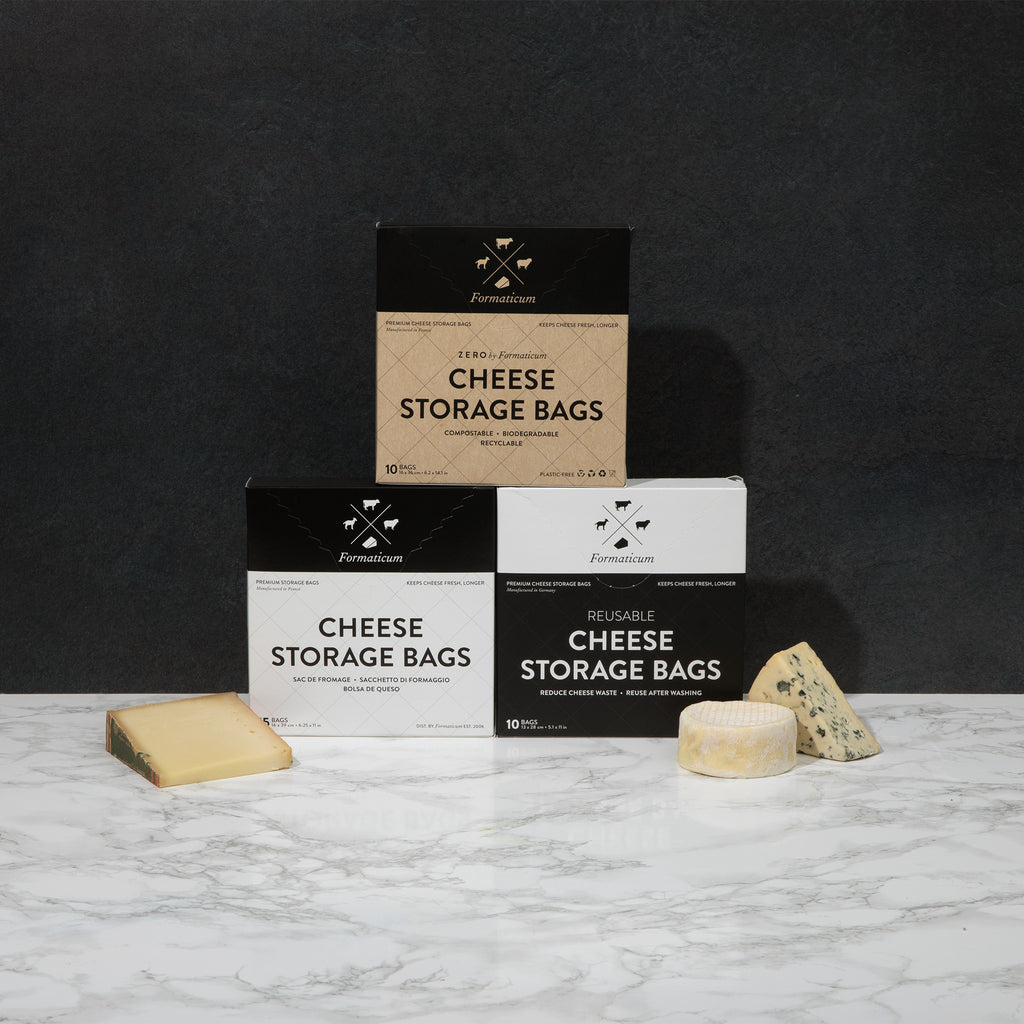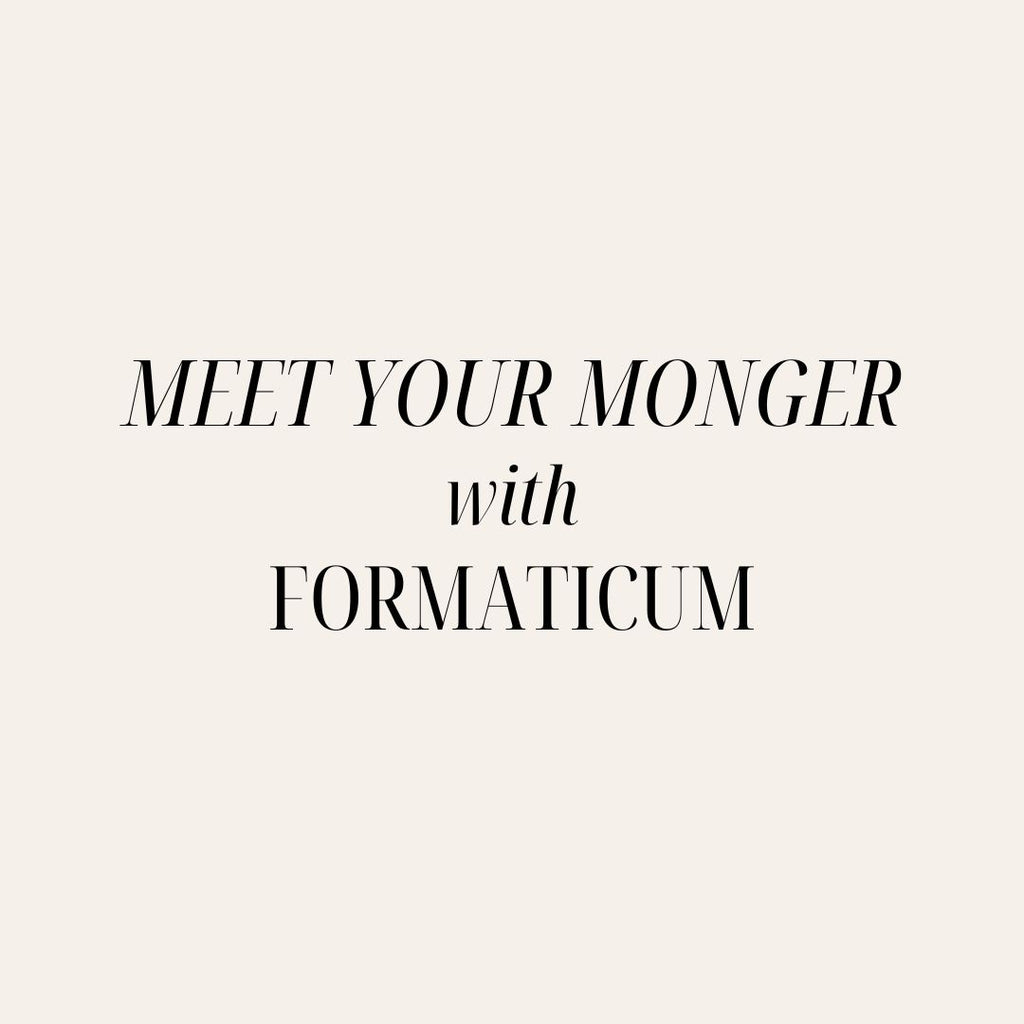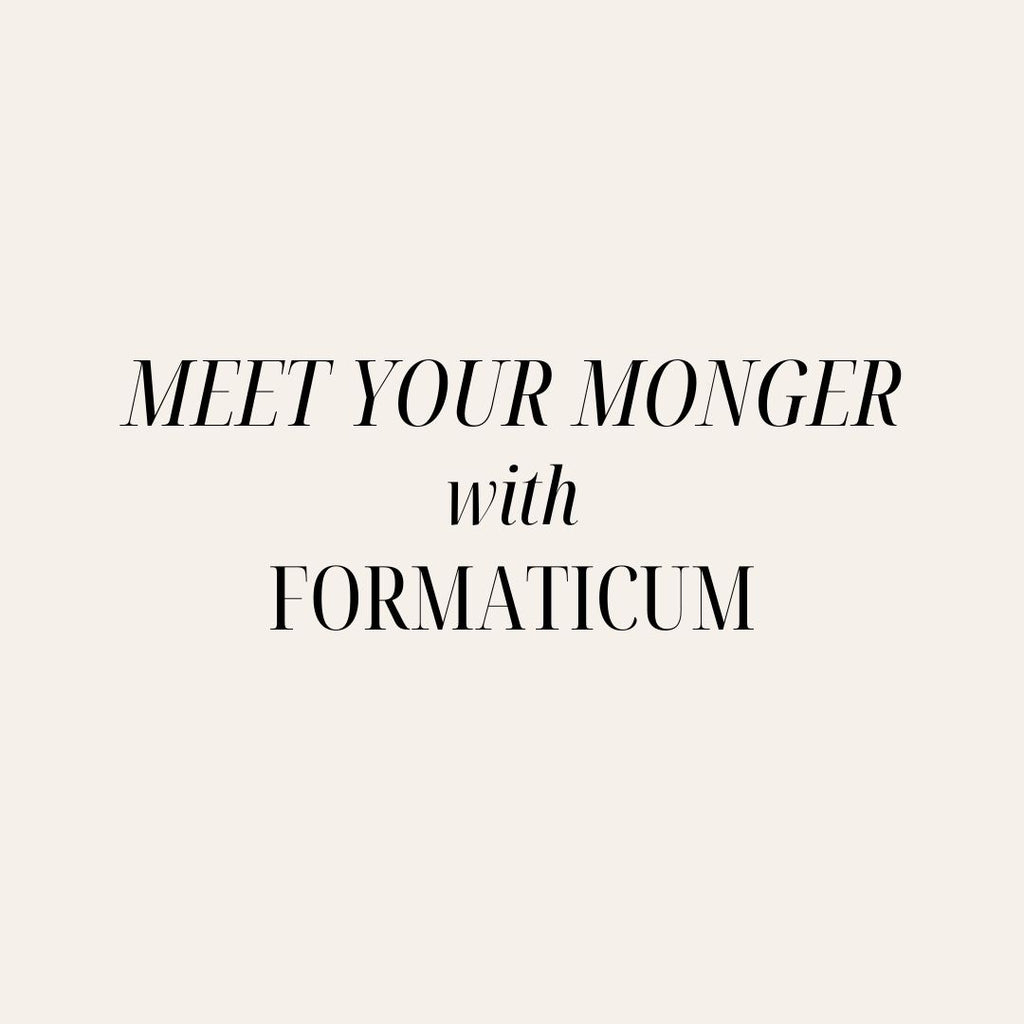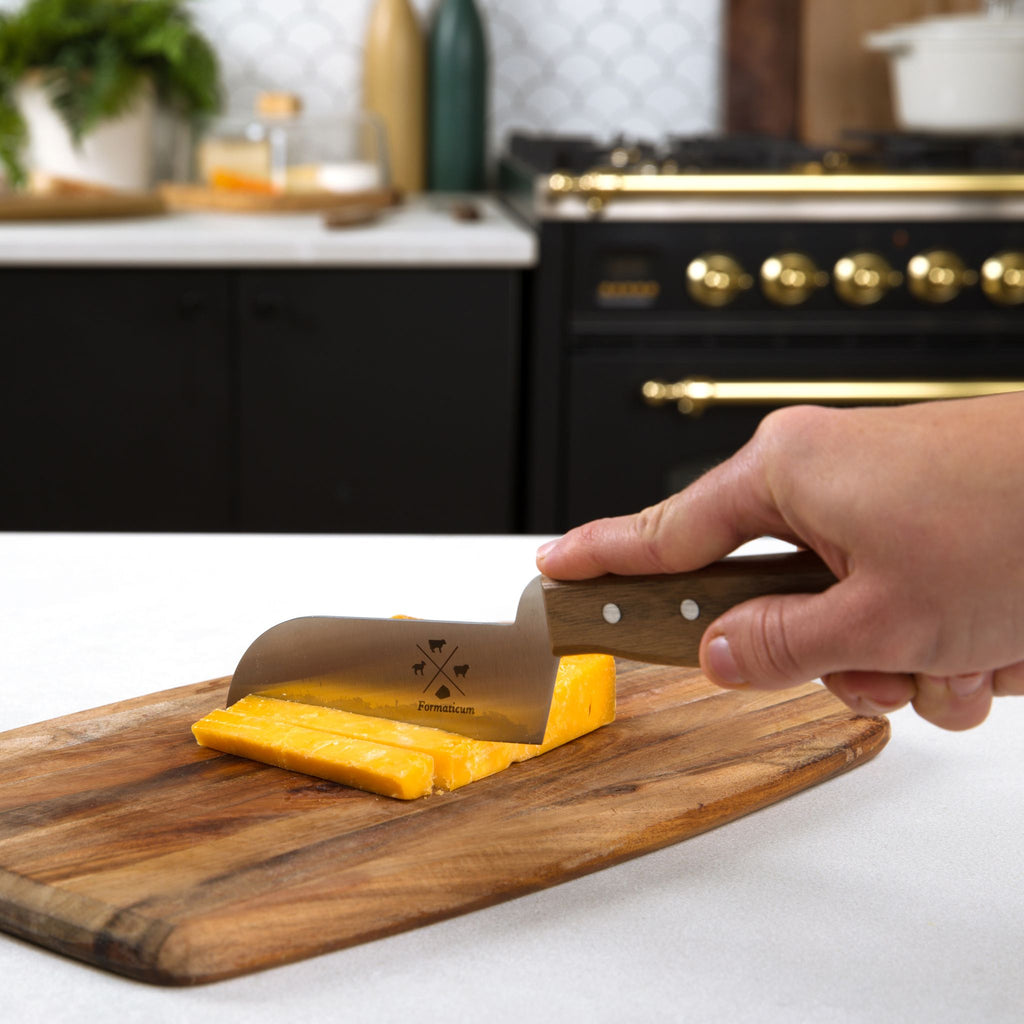Formaticum Retail Product Disposal Guide

Over the past few years, you may have noticed that we have launched some new retail products to complement our flagship Cheese Storage Bags and Sheets. And although we pride ourselves on offering a cheese storage solution for every lifestyle, we understand that the number of options might be overwhelming for your customers! We frequently get asked about the proper disposal methods for each different material, so here is a handy guide to share with your customers if and when they ask.
Classic Cheese Storage Bags: These bags are reusable for the same style of cheese - simply wipe the bag out with a damp paper towel in between uses. The bags can be recycled once wiped clean, but if butterfat stains are visible on the outside of the bag, they should be disposed of in the trash.
MONGER TIP: These bags are made out of our best-selling One-Ply paper, so all varieties of bulk One-Ply paper can be disposed of as outlined above!
Classic Cheese Storage Paper: These sheets are reusable for the same style of cheese - simply wipe off the sheet with a damp paper towel in between uses. The sheets can be recycled once wiped clean (remember to remove the sticker!), but if butterfat stains are visible on the outside of the sheer, it should be disposed of in the trash.
MONGER TIP: These sheets are made out of our flagship Two-Ply paper, so all varieties of bulk Two-Ply paper can be disposed of as outlined above!
Zero Cheese Storage Bags: These bags are plastic-free and made of greaseproof paper and vegetable-based wax. If wiped clean, they are recyclable and commercially compostable, but can be composted in your backyard if cut into smaller pieces - it will just take a bit longer to decompose.
Zero Cheese Storage Sheets: These sheets are also plastic-free and made of greaseproof paper and vegetable-based wax, making them recyclable, biodegradable, and fully backyard-compostable. Zero Cheese Storage Sheets are reusable for the same type of cheese - simply wipe off the inside with a damp paper towel in between cheeses. Once you notice butterfat stains in the paper, it's time for a new sheet.
MONGER TIP: All varieties of bulk Zero paper can be disposed of as outlined above!
Reusable Cheese Storage Bags: These bags comprise 40% calcium carbonate and 60% polyethylene, using 40% less plastic than other plastic-based materials. The bags are recyclable as long as they have been wiped clean of any residue, but they are sturdy enough to be hand-washed, air-dried and reused indefinitely for all types of cheese!
Reusable Cheese Storage Sheets: These sheets comprise 40% calcium carbonate and 60% polyethylene, using 40% less plastic than other plastic-based materials. The sheers are recyclable as long as they have been wiped clean of any residue, but they are sturdy enough to be hand-washed, air-dried and reused indefinitely for all types of cheese!
MONGER TIP: These sheets are made of the same material as our newly launched bulk Reusable Wrap, so it can be disposed of as outlined above.
And of course, all the retail cartons themselves are recyclable as well.
We hope that this information is helpful to you and answers all of your customers' burning questions about our retail products and bulk wrapping materials. In the case that you are asked a question that you cannot answer, we are here to help! Please feel free to reach out to us at wholesale@formaticum.com at any time with any questions. Thank you for your continued business and support!
Need to request a wholesale account to start ordering in bulk for your business? We can help with that! Email us at wholesale@formaticum.com to get started.
Meet Your Monger: Carol Johnson of Monger's Palate


The May edition of Meet Your Monger spotlights Carol Johnson, owner of Monger's Palate in Brooklyn, NY. Carol Johnson has owned and operated Monger's Palate, a cut to order cheese shop, since 2019, and the shop is known for an impressive rotation of cheeses kept in impeccable condition by Carol and her team. She has worked every job in the food industry from ship cook to hotel buffet roast slicer but has specialized in cheese for the last eleven years. She is an American Cheese Society Certified Cheese Professional, former assistant manager of Murray's Cheese, Cheesemonger Invitational Finalist, and often teaches on cheese when not running the shop. Carol also chooses Formaticum products for Monger's Palate - read our interview to find out why!
 What inspired you to become a cheesemonger?
What inspired you to become a cheesemonger? I came to NYC unexpectedly with no money and no plans but trying to get out of the kitchen lifestyle. The first job I got was as a cheesemonger and I completely fell in love.
We wrap all the cheese we sell to customers in the One-Ply Roll, as it makes a neat fold and keeps everything fresh.
Definitely the One-Ply Roll, but we also sell the retail Cheese Storage Bags and I use them at home for all those cheesemonger odds and ends.
I'd be one of those little Loire Valley chèvres like Crottin that's been aging for months, grey and unassuming but then super peppery and sharp on the palate.

Mold is good! There is an uphill battle with getting to an understanding of how it's natural to have surface molds as part of a healthy rind. The perception that "mold = spoiled" needs to be replaced with the idea that not everything has to have a sanitized appearance in order to be safe and delicious.
Cheese lasts a long time. Cheese is a preservation technique, and if it is properly wrapped and stored you can eat it for weeks!
Follow Monger's Palate on Instagram @mongerspalate and Formaticum on Instagram and TikTok @formaticum, and stop by the cheese shop if you're in NYC!
To nominate a shop or monger for the Meet Your Monger series, email emilia@formaticum.com.
Meet Your Monger: Kai Norton of Bedford Cheese Shop


February's edition of Meet Your Monger spotlights Kai Norton, the Cheese Manager at the woman-owned Bedford Cheese Shop in NYC, and one of the brightest stars in the next generation of cheesemongers. They are responsible for keeping the cheese case stocked with the best domestic and imported products they can find, as well as training other mongers on how to properly care for Bedford Cheese Shop's stellar selection. A passionate educator, Kai also teaches public cheese classes in the BCS education space and helps organize monthly cheesemonger education events. Kai also recently competed in the 2023 Cheesemonger Invitational, and was awarded an American Cheese Society scholarship, and they are currently serving on the ACS Education Committee. Read our interview with Kai below to learn more about their current role, how they draw inspiration from the cheese community, and why they love using Formaticum products.
What inspired you to become a cheesemonger?
Once upon a time, I worked at a small local market called Local Foods in Chicago, IL. Having been laid off from a third wave specialty coffee shop at the beginning of 2019, my partner helped me get a job packing bulk items for the pandemic panic-buying era. Everyone needed 25 pounds of beans, rice and flour! So I packed it.
Months down the road, I had moved into the role of Category Buyer. They needed help in the deli and cheese so I opted to help out because it sounded so interesting and I really wanted to learn how to build boards. I was immediately fascinated by this unknown realm- rinds, blues, cheddar meets a blue - I couldn’t believe it.
When Immortal Milk did a highly conceptual guided audio tasting in collaboration with Local Foods, I was amazed - I remember being floored that this was a job!

Conceptual food art brimming with dramaturgical, anthropological and historical styling choices, table design, and thoughtful pairing with unique handmade accoutrement….plus cheese!? It didn’t click until I saw someone who was Black doing this work - I never could have imagined there would be this community, so I went for it.
I scoured the internet to figure out how to pivot from food service/buying to working with cheese once the move to NYC was official. So here we are - I never could have dreamed up this reality but I’m grateful for the roundabouts on the road and the great people I have met along the way.
How do you use Formaticum products at your counter?
We use Formaticum as the recommended cheese storage method for customers coming in to buy large amounts of cheese. They are comfortable getting that extra hunk of Comté because they know it will hold up in the Formaticum Cheese Storage Bags or Sheets, both of which we sell at the counter.

I am a fan of the Professional 4-Knife Set. It contains four distinct cheese tools: a general cheese knife, blue cheese knife, soft cheese knife and cheese spreader.
Unlike many others, they do the job they are supposed to do without you losing a limb, taking chunks out of your hard cheeses or smooshing that gooey soft goat cheese. It's just a really great cheesemonger toolkit, especially beyond the counter.
If you were a cheese, which one would you be and why?
Zimbro - a cute little Torta-style cheese.
Zimbro can be quiet and understated, and it has a unique tang of personality but only reveals it with time. It can be pudgy, slightly firm or a gooey mess that’s kind of sweet but has a bite when necessary.
It has a lot going on, and is hard to pin down- but reliable and true to itself.
It is evershifting/fermenting

What is one thing you wish consumers knew about artisan cheese?
The robust ecosystem that sustains such an ancient, sisyphean process born of necessity and passed down to spark passion for tradition in their predecessors.
The energy, sweat, tears, years, land, ruminant, microbe and human hand that align these elements and shepherd these gems into existence. Artisan cheese is a great opportunity to remind consumers of the ethos, the humility, the humanity and respect behind food- but especially artisan cheese. This is what you are paying for.
I’d like consumers to remember to savor.
What is your favorite cheese storage fact?
Mold is not scary.
You can cut off mold and salvage most cheeses- there’s little reason to have any waste if the cheese is first, properly cared for in the case, and then properly wrapped and stored.

We couldn't have said it better ourselves, Kai!
Follow Bedford Cheese Shop on Instagram @bedfordcheeseshop and Formaticum on Instagram and TikTok @formaticum, and stop by BCS if you're in NYC!
To nominate a shop or monger for the Meet Your Monger series, email emilia@formaticum.com.
All About Annatto (and Beyond)

When discussing "American cheese," many so-called cheese aficionados turn their nose up at the concept, citing the assumed orange color as an indicator of low quality. But as cheesemongers, we know that not all American cheeses are artificially colored orange, and the color itself is not inherently connected to the quality of the cheese or even exclusive to cheese made in the United States. Cheeses like French Mimolette and English Red Leicester famously boast the orange hue, and have been for years prior to the popularization of cheesemaking in America. So what exactly gives orange cheese its striking color, and how did the tradition start? May is American Cheese Month, so it seems like the perfect time to talk to your most skeptical customers about the true history of this long-standing cheesemaking technique.
The orange color is a natural pigment derived from annatto seed, which comes from the achiote tree that is indigenous to South America, Asia, and Africa. The pigment is generally added to milk during cheesemaking, and does not impart any flavor onto the final cheese. Some orange cheeses you may be familiar with include aged Gouda, Double Gloucester, Cheshire, Cheddar, and even Colby, a Wisconsin original. But not all cheeses that appear to be colored are treated with annatto - for example, a rich yellow paste may denote a cheese made with grass-fed milk rich in betacarotene, the pigment that makes carrots orange. Some deep yellow cheeses may even be colored with saffron.
The history of coloring cheese dates back to 16th century England. Annatto was historically used to make British cheeses stand out at the market, as the vivid orange color called to mind the rich yellow color of the presumed higher quality cheeses made with the milk of pastured cows. It was also used to create consistency in cheese across the seasons - because cows can graze on fresh grass during the summer, their milk made deeper yellow-colored cheese. Cheesemakers would add annatto to their milk during winter to adjust the paler color of milk produced by cows grazing on hay during the winter, which does not contain betacarotene. Today, it is a stylistic choice, sometimes used by cheesemakers to help preserve traditional British territorial cheese recipes like Red Leicester, farmhouse Cheshire, or blue Shropshire.
Cheeses colored orange with annatto are also not the same as softer, stinkier cheeses with orange rinds like Taleggio or Epoisses - this pungent pigmentation is a result of the activity of the microbe brevibacterium linens on the rind. And to complicate things even more, some cheeses like Langres and Brebirousse are annatto-ripened, meaning annatto is used to color the rind to make it appear washed.
At Formaticum, we believe that every cheese has unique needs, and deserves to be treated and presented with a level of respect and attention to detail that mirrors the care that the farmers, cheesemakers, and affineurs put into producing the cheese. Because we know that cheese is a delicate living product, we also know that all cheeses require a different level of care to keep all parts - paste, rind, and all - healthy and thriving no matter what color they are. Luckily, we offer a variety of materials perfect for cutting and wrapping any and every style of cheese.
- Soft cheeses like Langres or Brebirousse should be cut with a Professional Soft Cheese Knife, as the hollow blade will prevent the knife from sticking to the cheese, ensuring a clean cut every time. Geotrichum- and bloomy-rinded cheeses should be wrapped in our plant-based Cellophane Sheets, which are more porous than our other wrapping materials, allowing these delicate rinds to get the oxygen they need to thrive. Washed-rind cheeses like Taleggio should be wrapped in plastic-free and compostable Formaticum Zero Sheets, which are greaseproof to better contain a slicker, smellier rind.
- Harder cheeses like Mimolette, Cheddar, or Red Leicester should be cut with our sturdy Professional Cheese Knife - the long blade and specially-designed handle make it ideal for cutting those hard-to-handle denser cheeses. Wrap any leftover pieces of these cheeses in our One-Ply Sheets to maintain the right level of humidity and keep them fresher longer than parchment paper or plastic wrap.
- Blue cheeses like Shropshire should be cut using our Professional Blue Cheese Knife, which was designed with a blade thin enough to make clean cuts through an otherwise crumbly cheese without disturbing the paste. Wrap blue cheeses in our Reusable Wrap, Super Wax, or Brown Alios, which are sturdy enough to be leakproof, but won't give your cheese the blues by suffocating it.
Browse our entire collection of bulk wrapping materials on our wholesale website.
Interested in custom printed paper or creating a wholesale account with us? Email wholesale@formaticum.com to get started.

Formaticum News
Our home to share our cheese chronicles and more.
Categories
Recent Posts
Formaticum Retail Product Disposal Guide
Meet Your Monger: Carol Johnson of Monger's Palate
Meet Your Monger: Kai Norton of Bedford Cheese Shop
Upcoming Events
Connect with Us
Join the Newsletter
Sign up to receive special offers, new product releases, updates from the cheese shop, and more.
